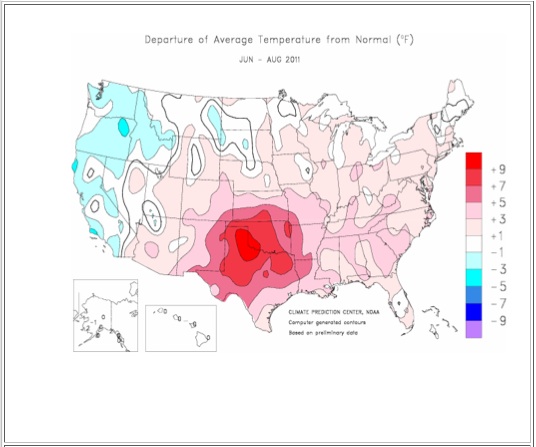If the nation’s epic heat this summer seems like a distant bad dream, you must live on the West Coast. Not only did California largely escape the bake, it moved in the opposite direction, with temperatures running anywhere from one to five degrees (F) below normal in many areas.
The National Oceanic & Atmospheric Administration (NOAA) has released a map that provides a telling snapshot of summer aberrations around the nation.

David Kroodsma’s recent post for Climate Central provides excruciating detail of what the rest of the country was going through:
Using Climate Central’s record temperature tracker which draws on the National Climatic Data Center’s database, we found that June, July, and August saw more warm temperature records tied or broken than any other summer in the past decade: more than 26,500 record warm temperatures were set across the nation. By comparison, fewer than 3,500 record low temperatures were set — the fewest of any summer in the past decade.
It was a summer that brought new meaning to the term “Texas barbecue,” with NOAA confirming that the Lone Star State suffered the hottest summer on record for any state in the nation.
This would seem to be consistent with a 40-year “coastal cooling” trend noted by Robert Bornstein and others. But if coastal cooling seems like a contradiction to global warming, it’s not. It’s a byproduct of it, says Bornstein, a meteorologist at San Jose State University. He says that even though the ocean is warming up, interior regions are warming faster, turning up the natural “vacuum cleaner” that pulls cooler ocean air inland. Some of this cool air makes it as far as Sacramento, says Bornstein, which might help explain why the California capital made it through August with no triple-digit temperatures.


